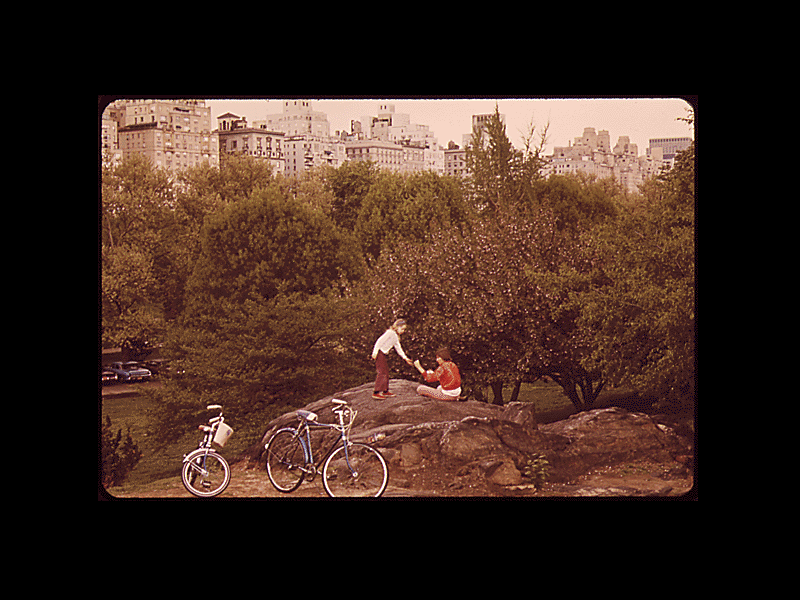This audio, number two of three in a Pan Am series about the wonders of New York City, focuses its attention on Central Park. Part of a worldwide collection of city walking tours sold by the airline from the late 1960s to the early 1970s, this tape promises to show the listener "the New Yorker's New York", an insider's guide to the city's hidden gems.
There are a few interesting points-of-fact about New York living in the early 1970s here. For one, bike rentals were a mere $3.50 a day! The tour guide also notes that, aside from being a "paradise of natural pleasures for the busy New Yorker," Central Park visitors can also find "ball fields, model sail boating, protest marches, and more playgrounds than a child ever dreamed of."
From today's perspective, the whole idea of an audio walking tour from this time is a little surprising, considering the first portable cassette deck (the Philips EL3300) was only released in 1964. If one was lucky enough to get their hands on a deck (complete with leather carrying case and strap), they could stroll and listen, stopping and starting the tape at points of cultural and historic significance, no doubt rather conspicuously with map in hand.

The first Compact Cassette recorder: Philips EL 3300.
The accompanying maps for the Pan Am tours were a great achievement in graphic design. According to the Glaser Archives at SVA, the celebrated designer
George Tscherny "completed a bogglingly wide range of work standardizing the graphics for Pan Am in the early ’70s, redesigning everything from timetables to stewards’ aprons over the course of two years. These city guides are of a piece with the company’s other projects of that era, recalling both the bold imagery of Chermayeff & Geismar’s posters for the company and Tscherny’s own modular environmental graphics."

1970s, airlines, pan am, publication design. George Tscherny
Sadly, we don't have the complete Central Park tour map, so we made our best interactive approximation below. Enjoy!


